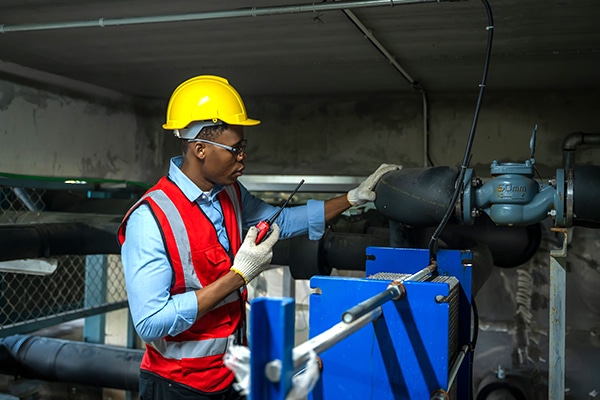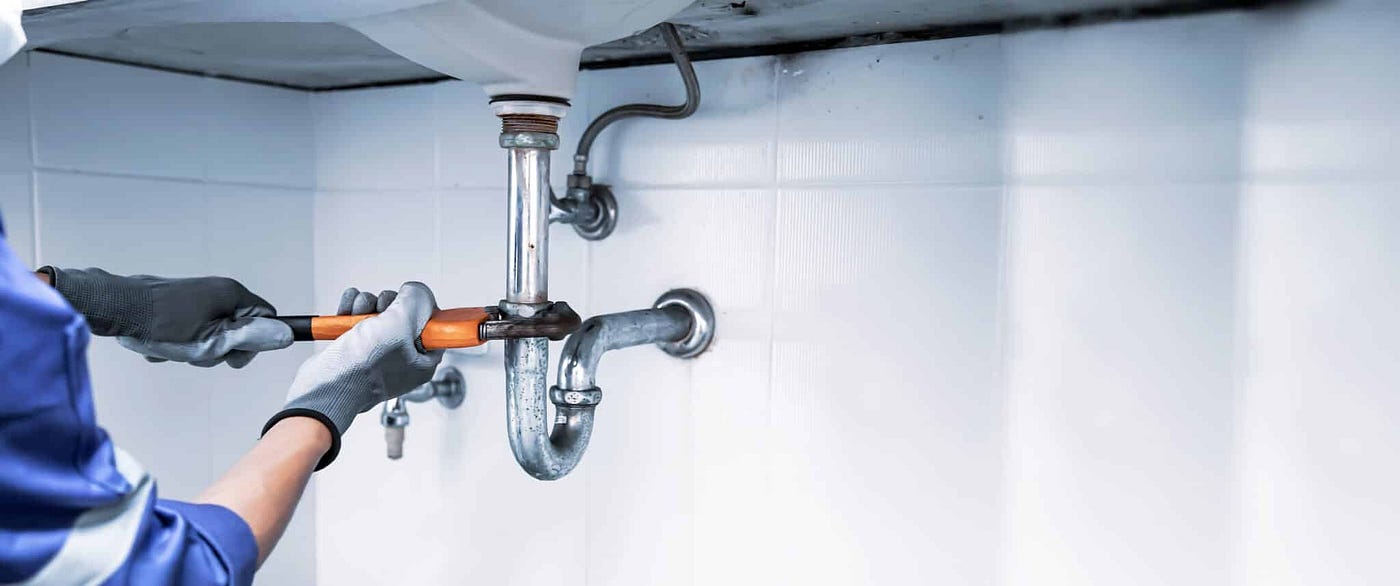Insights into the Upcoming Era of Plumbing: Patterns and Breakthroughs
Insights into the Upcoming Era of Plumbing: Patterns and Breakthroughs
Blog Article
Are you interested in guidance on The Future of Plumbing: Trends and Innovations to Watch?

Intro
The plumbing industry is going through a transformative phase driven by technological innovations and growing problems for sustainability and effectiveness. This write-up checks out emerging trends and innovations shaping the future of plumbing.
Regulatory Landscape
Governing structures play a critical function in shaping the fostering of pipes advancements, with criteria and codes governing every little thing from water efficiency to product safety. As modern technologies remain to advance, governing bodies should adapt to make certain consumer security and ecological stewardship.
Future Outlook
The future of plumbing is characterized by continued development and assimilation with other markets such as IoT, renewable resource, and structure automation. By accepting lasting practices, leveraging arising technologies, and prioritizing user-centric style, the pipes sector is poised to resolve the advancing requirements of society while reducing its environmental footprint.
Augmented Fact in Pipes
Augmented Fact (AR) technology is reinventing plumbing by supplying specialists with real-time visual assistance for troubleshooting and repair service jobs. AR-enabled wise glasses or mobile applications overlay electronic information onto the physical setting, helping plumbing professionals visualize pipe formats, recognize covert leaks, and execute repair work with precision.
Effect of 3D Printing
The development of 3D printing has introduced brand-new opportunities in making pipes parts. From custom-designed components to detailed pipeline fittings, 3D printing permits rapid prototyping and on-demand production, lowering lead times and enabling better personalization in plumbing layout.
Health and Safety Characteristics
In response to heightened problems for health and safety, plumbing components are integrating functions such as antimicrobial surface areas, touchless procedure, and self-cleaning mechanisms. These developments not just improve hygiene but also advertise customer convenience and ease.
Hygiene-focused Fixtures
Touchless faucets, self-sanitizing toilets, and antimicrobial surface areas are coming to be increasingly common in residential and business setups, reducing the danger of germ transmission and advertising a cleaner, healthier environment.
Water Quality Tracking
Improvements in water quality tracking modern technologies enable property owners to keep an eye on the pureness and security of their water in real-time. Smart water high quality sensors can identify contaminants, pH degrees, and temperature variations, equipping individuals to take positive measures to guarantee water security.
Remote Pipes Solutions
Remote diagnostics and online help are transforming the way pipes services are delivered. With video conferencing and remote accessibility innovations, plumbing technicians can troubleshoot problems, give assistance for do it yourself repairs, and even execute remote inspections, offering higher access and convenience to homeowners.
Difficulties and Opportunities
While pipes innovations hold enormous guarantee, they additionally existing obstacles such as information personal privacy worries, regulative conformity, and the demand for labor force training. Resolving these difficulties needs partnership in between sector stakeholders and regulative bodies to ensure secure and accountable implementation of brand-new innovations.
Smart Plumbing Solutions
Incorporating clever innovation into plumbing systems allows remote surveillance, leakage detection, and automated upkeep. Smart sensors and IoT (Net of Things) devices permit house owners and plumbing professionals to keep an eye on water use and discover problems in real-time, resulting in much more reliable source monitoring and positive maintenance.
Water Efficiency Solutions
With enhancing focus on water preservation, cutting-edge solutions are being created to lessen water wastage in plumbing systems. High-efficiency fixtures, greywater recycling systems, and wise watering controllers are among the technologies helping customers decrease their water impact while preserving convenience and convenience.
Sustainable Materials
The change towards sustainability reaches plumbing products, with an expanding choice for environment-friendly alternatives. Eco-friendly piping materials, such as PEX (cross-linked polyethylene) and HDPE (high-density polyethylene), deal resilience and resistance to rust without endangering environmental honesty.
Predictive Upkeep
Anticipating maintenance techniques take advantage of information analytics and artificial intelligence formulas to anticipate and prevent pipes issues prior to they happen. By analyzing historic information and performance metrics, anticipating maintenance algorithms can determine patterns and abnormalities, enabling proactive treatments to stay clear of pricey repair services and disruptions.
Final thought
To conclude, the future of pipes is defined by a merging of modern technology, sustainability, and user-centric layout. By welcoming smart options, sustainable products, and proactive maintenance practices, the plumbing market can boost performance, advertise security, and contribute to a much more sustainable future.
Plumbing Industry Trends You Need To Know
Smart technology in plumbing
Homeowners want to be able to manage their homes from their phones. The technology exists to make that happen. From smart toilets to leak detector devices, the whole plumbing system can be managed on an interconnected network made up of sensors, IoT devices, and machine learning algorithms.
This allows for wireless control to turn appliances on and off, automate routines, and access advanced monitoring to track water usage and flag potential issues. Smart technology streamlines water consumption, maintenance and energy usage, creating a more efficient system.
Green plumbing
The data analysis possible with smart technology not only improves convenience and cost-effectiveness but also fulfills a high-priority customer desire – sustainability. Consumers are very aware of their impact on the planet and want plumbing solutions to reduce damage and support sustainability. Eco-friendly plumbing solutions are already starting to emerge.
Customers can opt for low-flow toilets, water-saving faucets, and connections to sustainable energy sources. Beyond monitoring water consumption, customers can conserve water through the installation of greywater systems. This is a system that collects water that has been used but is still clean enough for some household uses such as toilet flushing.
Shorter product pipeline
To keep up with modern plumbing, plumbers need modern tools that enable them to complete jobs more efficiently. One technology making strides in this area is 3D printing. By 3D printing key plumbing fixtures, plumbers can reduce wait times even for specialized fixtures. It minimizes delays often seen in traditional manufacturing that frustrate customers and prevent plumbers from taking on more work.
Off-site repairs
Augmented reality is making a splash in many industries including plumbing. Plumbers can map a building online so they can explore the plumbing system through augmented reality, identifying areas of maintenance and repair completely digitally. This technology can be applied quite widely in plumbers’ work including planning installations and training new recruits. It’s safer, smarter and more efficient.
Low-footprint materials
Another way for plumbing companies to reduce their environmental footprint and meet the customer demand for sustainability is by using recycled materials in their work. The products they source and manufacture such as pipes, fixtures and faucets can be made from recycled materials. This saves the planet while being just as effective.
Onsite water purification
Additionally, plumbing companies can be advocates of water conservation and ease the financial and environmental concerns of customers by offering water purification systems. New water purification technology such as reverse osmosis systems and UV systems make it possible for homeowners and business owners to thoroughly cleanse water, removing contaminants onsite. This means the water can be safely reused in more ways than greywater can be, establishing a water recycling loop.
Tankless water heaters
Another innovation of modern plumbing is tankless water heaters. The idea is that the water is heated on demand as it runs through the system instead of being heated in a water tank. This is more energy efficient and therefore cost-effective and eco-friendly because water isn’t heated needlessly.

I hope you enjoyed our part about The Future of Plumbing: Trends and Innovations to Watch. Thank you for spending some time to read our posting. Sharing is nice. Helping others is fun. Thanks for being here. Revisit us soon.
Source This Article Report this page